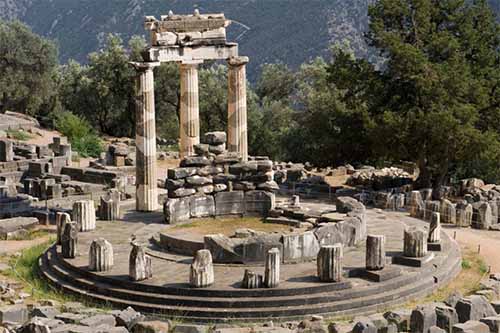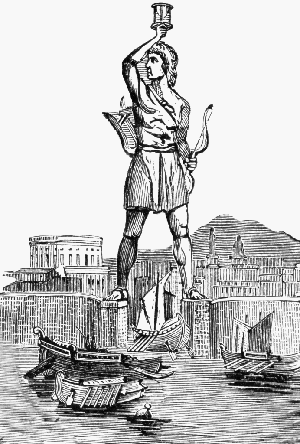Interesting Facts And Information About Ancient Greece Culture

Patmos, the island where god announced the "end of the world"
John, the author of the Apocalypse (The Book of Revelation), was arrested and exiled to Patmos during the great persecutions wanted by Domitian. It was on this island in the Aegean archipelago, barely 34 square kilometers, 60 km from Ephesus, that the Evangelist received the symbolic message which enabled him to write the book which concludes the New Testament. It was more precisely in the Cave of the Apocalypse, the most evocative place of Patmos. The cave, transformed into a small Orthodox church, retains an element of mystery that cannot escape even the most distracted visitor.
It is difficult to assert that it was precisely in this place that John was visited by the angel of the lord: what is certain is that the cave of Patmos is inhabited by a myth as old as man, full of atavistic suggestions and reminiscences. In the cave, a strange crack bears the signs of the divinity". Known as the “canal”, it is now worn by the hands of thousands of faithful who over the centuries have visited the place.
It was through this crack that John of Patmos listened to the words spoken by the "powerful voice".
Delphi and the navel of the world

Delphi is a place under the auspices of the sacred: located under the cliffs of Mount Parnassus and above the valley of the Plistus river, the island experienced its heyday between 700 and 200 BC. It was a prominent place for the Greek religion.
At 570 meters above sea level, the Oracle of Delphi (Pythia) sat in the Temple of Apollo: the Pythia went into a trance and communicated with the deities. Her voice, not always intelligible, was translated by the priests who then transmitted the messages to those who requested it.
According to legend, Zeus ordered two eagles to fly towards each other at the same speed, each departing from one end of the world, east and west. The two eagles would have met at the place considered from this moment as the "navel of the world", omphalos in Greek, that is to say the Temple of Apollo at Delphi. It is in this temple that today two copies of the stone that represents the center of the universe are kept. This stone is in the shape of a half-egg and is covered with a network of knotted threads carved on the surface. It is said that this stone could be that given by Rhea to Chronos in place of Zeus and spit out by the god. It could also be the tombstone of Dionysus.
In the beginning was the Colossus of Rhodes

“Rhodes is an island. It was submerged for a very long time, then Helios discovered it and asked the gods to give it to him. On this island was a 36-meter tall colossus that bore the attributes of Helios. Philo of Alexandria, in his description of the Seven Wonders of the World, speaks of the mythical Colossus of Rhodes which, for certain contemporary authors, never existed and was only the fruit of invention and mythology. Philo continues: "We built a marble podium and, on this basis, the feet up to the ankle bone. We had already mentally designed the proportions of the statue of the god. Since the soles of the feet on the base were already larger than those of the other statues, one could not build the statue apart and place it on it.
The pegs had to be poured over, as is done for building houses, the work by foundations and, little by little, rises. The colossus which does not exist is however still the object of the attention of many tourists and passionate about mysteries, who in this island of the Southern Sporades, between Turkey and Greece, seek the vestiges of an ancient history imprinted of mythology. According to tradition, the Colossus of Rhodes was oriented towards the sea: an immense and lonely male representation, whose legs spread apart served as a bridge at the entrance to the port.
One foot on dry land and the other on the pier where you can still see the ruins of the fortress of the "knight orders" today. Although we have no objective archaeological record, this "wonder of the world" has left many accounts. They come particularly from travelers and pilgrims who, during their journeys to the Holy Land, stopped over on the island of Rhodes, the last western outpost before falling into the unknown of the eastern world.









































































































































































































































































































































